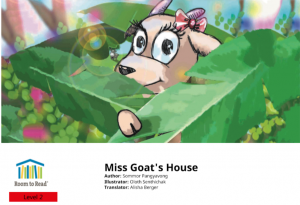The session began with a clip from ‘Veerumandi’ where the protagonist, a death-row inmate, is seeking for his death sentence to be reconsidered and makes a larger appeal for abolishing the death penalty. Kruthika led a discussion by asking students questions that included: Were the protagonist’s arguments for reconsidering the death penalty convincing? While some students believed that the death penalty could act as a deterrent others were unsure about the link between the two.

After discussing death penalty and right to life, the children read the story of ‘Ms Goat’s House’ which narrates the journey of Ms Goat to find a house during summer. Kruthika asked the children to reflect on the need for a house/shelter. Each group presented their thoughts and pointed out how shelter was crucial to provide protection to human beings, facilitate social life, ensure privacy and importantly form an integral part of a child’s right to development. Kruthika pointed out how Olga Tellis, a prominent journalist, took up the case of the right to livelihood and shelter of pavement dwellers in Mumbai. In this case, the Supreme Court, recognised the right to livelihood and shelter as an important fundamental right.
Kruthika concluded by tying in different aspects of the discussions to right to life and Article 21 of the Constitution of India. Taking cues from the children, she noted that the Constitution guarantees our right to life and personal liberty. This right is understood to include adequate nutrition, clothing and shelter and facilities.

